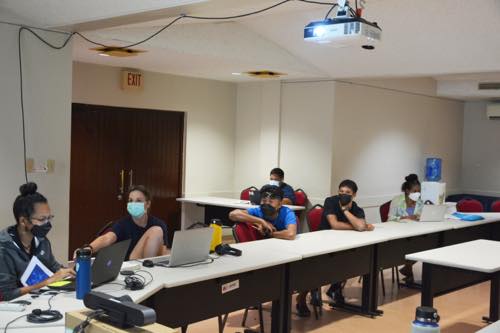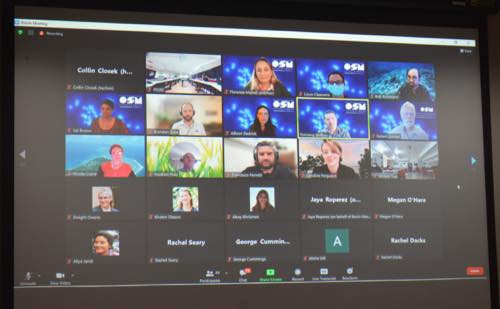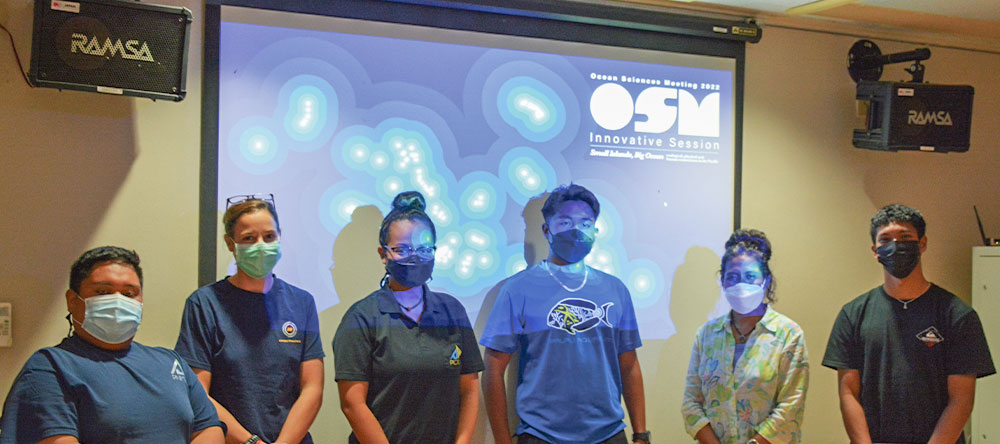- Research
Pacific Ocean Connections Highlighted in International Ocean Sciences Meeting
The Palau International Coral Reef Center (PICRC) co-hosted an Innovative Session during the Ocean Sciences 2022 conference focused on connections between Pacific islands. The virtual session brought together scientist and thought leaders, including PICRC staff, from throughout the Pacific to explore relationships between our oceans and cultures.
The session was held virtually from March 1st -3rd. Native Hawaiian navigator and President of the Polynesian Voyaging Society Nainoa Thompson opened the session with a keynote address highlighting the need for a shared destination for our ocean conservation journey.
During the remainder of the session researchers and panelists led presentations on their work in Pacific islands and shared visions of how our region can come together to protect our unique environments and societies.
Several PICRC collaborators presented their research projects, including studies of Pacific food systems, the connectivity of near shore and offshore marine ecosystems and the economics of shifting diets towards pelagic fish.
As a highlight of the session, Palauan students shared their recent research project focused on decolonizing environmental social research. The Ebiil Society and Stanford Center for Ocean Solutions led the project and trained students on social-ecological research approaches. Students applied their new skills through interviews with Palauan elders.
To close the session, PICRC CEO Dr. Yimnang Golbuu and Atuatasi-Lelei Peau, Superintendent of the National Marine Sanctuary of American Samoa (NMSAS), chaired a dynamic session showcasing the Sister Sanctuary Agreement between NMSAS and the Palau National Marine Sanctuary.
“It was an honor to participate in this session with so many talented researchers from across the Pacific” said Dr. Golbuu. “Together, we can build a future for our islands that preserves our rich environment and culture.”
The conference was co-hosted by PICRC, NMSAS, the Stanford Center for Ocean Solutions and the University of Hawaii.




